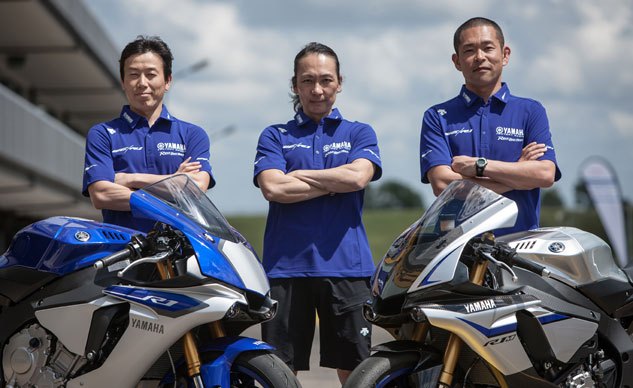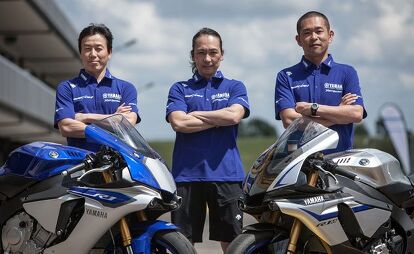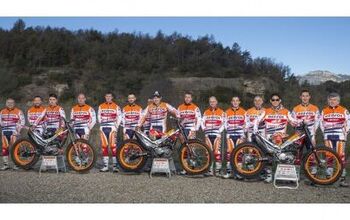Trizzle's Take – Japan

By the time you read this, I will be off the clock and lost somewhere on an island, away on a much needed vacation, just the wife and me. The destination? Japan. I’m not bringing my helmet with me, and my only interaction with a motorcycle will be if I bump into one while darting from sushi joint to ramen house. Airplanes, bullet trains and our own two feet will be our method of travel this time around. It’s a little ironic in a way; me being in the middle of a country that has contributed so much to motorcycling, yet choosing to remove myself from two wheels as much as possible. Sometimes, however, the best way to recharge the batteries is to get away from it all. Luckily, there’s more to me than just motorcycles.
The wife and I have long been intrigued by Japan and its culture. Specifically, its food culture. I’m not sure if the term “foodie” is appropriate for us, but we do enjoy our sushi every now and then (as well as soba, udon, ramen, yakitori, chanko nabe etc). As we started learning more about sushi (if you haven’t seen the documentary Jiro Dreams of Sushi, you really should) and Japanese cuisine in general, we discovered how much care and attention goes into the experience. For this particular example I’ll stick with sushi. Most think the fish is the most important ingredient, when in fact, any reputable sushi chef worth his wasabi will tell you that 90% of sushi is the rice. Digging further, we discovered that a respect for tradition, continuous learning, and a journey towards perfection are cornerstones of Japanese gastronomy.
As I watched multiple shows and documentaries about Japanese food, I started to see several parallels between Japanese food and Japanese motorcycles, particularly sportbikes. There’s a respect for tradition, combined with an effort to push the envelope. Like the saying goes, “You have to know the rules before you can break them.” Some chefs spend their entire adult lives perfecting their craft and improving their technique, in the process raising the bar for those who come next. By the same token, engineers can toil away days, weeks, months or even years to add a few horsepower, shave milligrams, or tune a certain amount of chassis flex into a new motorcycle.
I can’t help but think of the Yamaha R1/R1M and Kawasaki Ninja H2/H2R when it comes to the two most recent examples of Japanese sportbikes raising the bar. Both machines are the result of jaw-dropping feats of engineering and are sure to go into the moto history books as landmark motorcycles.
Let’s start with the Yamaha. Tradition? Though the R1’s CV is relatively short, only dating back less than 20 years, it still has made quite an impact in that short amount of time. The original R1 blew the doors off the competition when it burst onto the scene, making more power and weighing less than its rivals. Yamaha engineers still respected the brand’s past, however, incorporating the Genesis engine architecture – with its five-valve head – into this groundbreaking sportbike.
Fast forward to 2015 and the new R1/R1M has boggled our minds like the original did. The crossplane crankshaft, introduced on the previous generation R1, pays homage to Yamaha’s MotoGP efforts, only engineers managed to make it slimmer, lighter and more powerful than before. Mechanically, the R1 is an impressive motorcycle, but its most impressive feature is the sheer amount of electronics it employs, much of which was first introduced on the M1 MotoGP bike less than five years ago!
In the past, it was normal to expect to see technologies first seen on race bikes make their way to road bikes within seven to 10 years. Engineers (and legal departments) wanted to ensure a technology was perfected and reliable before sending it down the production line. But with the R1 and especially the R1M, Yamaha engineers (and data programmers) have one-upped themselves, making tech like slide control and bike programming from a tablet app ready for consumer consumption in less than half that time.
However, the closest two-wheel parallel I can think of to the sushi master striving for the perfect piece of nigiri is the Kawasaki Ninja H2/H2R. To reuse the sushi reference, young chefs spend the early part of their careers apprenticing; they sweep floors and run errand work for years before they’re even allowed near food. Then they spend another year or two just learning how to make perfect sushi rice. Once they are finally granted permission to work with fish, they learn everything from choosing the optimum fish at the fish auction, which pieces of the body will provide optimum flavor, and equally as important – perfecting the cut of the nigiri or sashimi before it is served to the customer. It’s a laborious task, but one they take pride in.
When I look at the Kawasaki H2 and H2R, I see a similar level of dedication to one’s craft. Sure, Kawasaki may have bombarded us with nearly 30 teaser videos highlighting every facet of the H2, but there’s no denying the bike is a masterful piece of engineering created by numerous teams of people who worked long hours to see it come to fruition.
In keeping with tradition, Kawasaki paid homage to its past with the H2 moniker and even gave it performance levels meant to intimidate its rider, much like the original. Kawasaki has stated the H2R was a project meant to see what its engineers were capable of when not constricted by regulations, and I can’t help but think each engineer who worked on this bike was making up for the work they put into some other boring project they worked on when their career first started.
To appreciate my point about engineering excellence and no stone going unturned, consider the level of detail that went into the H2/H2R. For starters, even the paint job required considerable attention, the mirrored black paint job amplified by a layer of pure silver underneath, a technique Kawi says is a first for a production car or motorcycle.
From there you have the steel trellis frame, welded by both robots and humans, the aerodynamic flaps and spoilers, dog-ring transmission, and electronics suite to help tame the H2 for us mere mortals.
Then of course, there’s the H2’s defining feature – its supercharger, designed in-house because nobody else would accept the engineering challenge. As a result, Kawasaki engineers came up with a design able to pump an incredible amount of air so efficiently it doesn’t even need an intercooler. It’s such a precious piece that “Just two people are dedicated to assembling the superchargers at the factory,” says E-i-C Duke in his first ride review above. Like a master sushi chef at a high-end restaurant, only a select few are allowed to prepare food for the customer.
In many ways, the culinary world and motorcycling couldn’t be any more different. Then again, once you look beyond the surface, connections to each world will start to appear. Maybe that’s why I’m intrigued by both. It’s unlikely I’ll see an H2 during my stay in Japan, so instead I’ll ogle over the 400cc sportybikes we don’t get back home. Hopefully when I get back I’ll have more food and motorcycle comparisons to draw on. And with that, I bid you sayonara. I’m off to find my next dish.

Troy's been riding motorcycles and writing about them since 2006, getting his start at Rider Magazine. From there, he moved to Sport Rider Magazine before finally landing at Motorcycle.com in 2011. A lifelong gearhead who didn't fully immerse himself in motorcycles until his teenage years, Troy's interests have always been in technology, performance, and going fast. Naturally, racing was the perfect avenue to combine all three. Troy has been racing nearly as long as he's been riding and has competed at the AMA national level. He's also won multiple club races throughout the country, culminating in a Utah Sport Bike Association championship in 2011. He has been invited as a guest instructor for the Yamaha Champions Riding School, and when he's not out riding, he's either wrenching on bikes or watching MotoGP.
More by Troy Siahaan













































Comments
Join the conversation
How about some audio reference from the land of the rising hifis?
Ride. Eat. Repeat.
Hey Trizzle, if you're ever in Woodland Hills, stop by Brothers Sushi on the Boulevard.
Oh man, now I'm hungry - and I just had dinner!